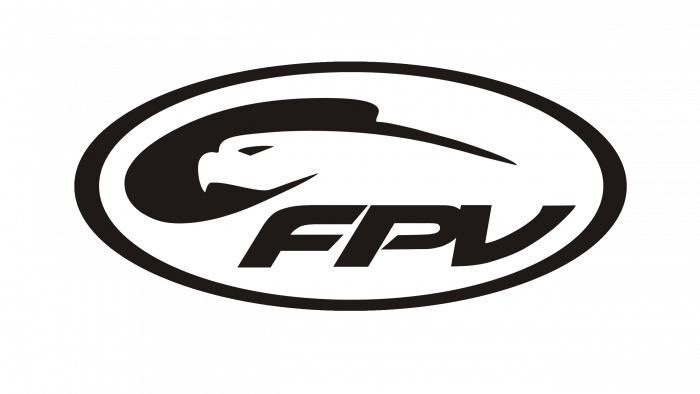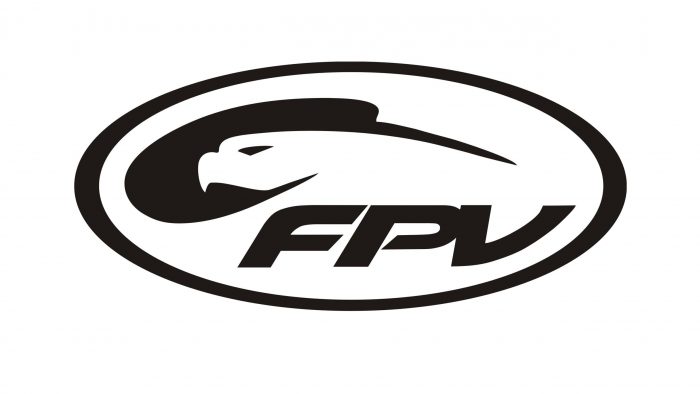FPV is the name of the Australian subdivision of Ford, which deciphers as Ford Performance Vehicles. The company was established in 2002 with the idea of the design and production of high-performance cars based on the classic Ford models. The brand was discontinued in 2014.
Meaning and history
The visual identity of the Ford subsidiary was introduced in 2002 and has never been changed, just the background of the horizontally oriented oval badge switched from blue to black depending on the model of the company’s car.
There were also different options of the badge execution — it could be drawn flat, in a monochrome or white and blue palette, it made three-dimensional, then white turned silver, and the edges of the oval gained thickness and gradient shades. Though one thing has never changed — the symbol of the brand.
The FPV badge featured a stylized image of an eagle’s profile, facing left. The bird had sharp lines in its eye and beak, which made it look dangerous and aggressive. The lettering was placed under the head of the eagle, on its silver “wing”.
As well as color palette, there were two versions of the FPV inscription typeface, both based on one bold and modern sans-serif font, though one had sharp ends of the lines and an elongated tail of the “V”, directed to the left, as well as the eagle.
Font and color
The FPV lettering from the sharp and powerful brand’s emblem was written in all capital letters of a custom italicized sans-serif typeface, which was most likely based on Snasm Heavy Italic, but with the contours and lines modified and sharpened.
In terms of color, the Australian subdivision of Ford, specialized in the production of high-performance cars, chose traditional and timeless combinations of black and silver or blue and silver. For flat versions, the brand used monochrome and white with blue.
Both styles looked clean and fresh, and evokes a sense of confidence, strength, and determination, brilliantly reflecting the purpose of a strong brand and its values.








